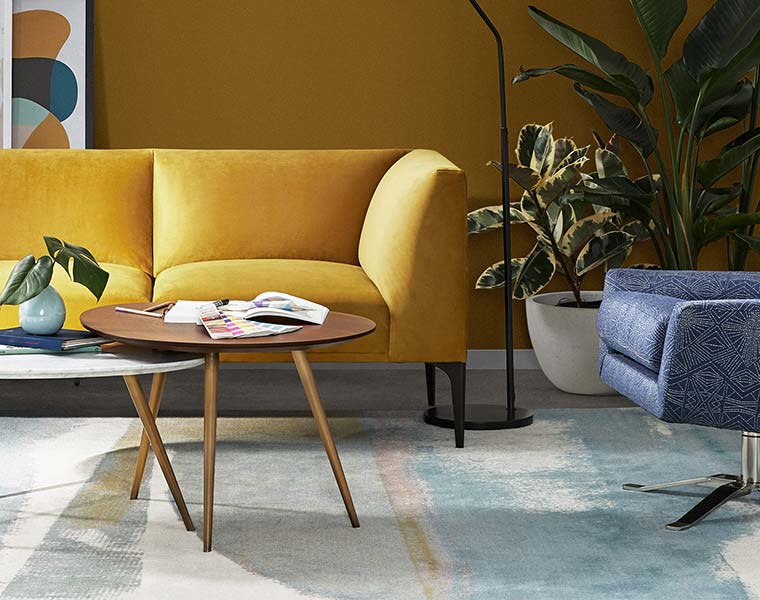A world where we all liked to chill out in exactly the same way would be a rather boring and frustrating place to be. Just imagine it – there would either be queues around the block to get into the gym, no seats ever left at the cinema or a constant stream of people wanting to book annual leave for a long weekend away.
Fortunately, relaxation looks different to various types of people and the same can be said when it comes to seeking out rejuvenation in the workplace.

In this article, we’re going to explore six of the most common rejuvenation categories that our Workplace Consultants have identified and how you can accommodate them through office interior design and resource…
The Lone Wolf
The Lone Wolf is somebody who needs some uninterrupted ‘me time’ in order to completely relax.
Whether it’s a break from their resident colleagues or remote workers communicating with them via email, this personality needs their privacy.
The benefits of incorporating dedicated private spaces within a workspace design scheme is something we champion regularly and accommodating rejuvenation is one of the main factors.

The Silence Seeker
As open plan working, collaboration and fluid movement around the office become the norm, noise levels can sometimes become problematic.
For this reason, it’s vital to provide those who like a bit of peace and quiet when they’re trying to relax with a low-noise setting with minimal audible disruption.
Placing this setting away from high footfall zones such as walkways, hot desking clusters and the main reception area is a great way to reduce noise.

This can then be supplemented with acoustic solutions or acoustically enhanced office furniture which help to absorb excess noise and in turn, lower stress levels and frustration.
The Tech Escapee
Almost all of us will have carried out – and felt the benefits of – a technology detox or social media cleanse in our private lives. Taking a day off the digital grid to reconnect with the real world.
The invaluable advantages which come of extracting technology for at least a small portion of your working day should not be overlooked either.

We recommend creating a microenvironment within your ecosystem of work settings where there is no technology.
Keep this as a place where users don’t have to be constantly connected; a space where they can switch off once or twice during the day to boost analogue creativity and mental clarity.
Ergonomic furniture such as Steelcase’s intuitive Gesture Chair has been developed to combat modern issues such as ‘Text Neck’ – encouraging downtime from devices is another effective tactic to reduce work-related physical health problems.

The Social Butterfly
While some need personal space and privacy to effectively rejuvenate, others prefer to interact with people on a casual level and connect with colleagues in a relaxed environment.
Designing a social space where staff can go to build personal relationships and chat about something other than work is the ideal way to accommodate this type of downtime.
A great example of this is the Games Room we created for M247 (pictured below) where staff go to read, play video games or catch up on non-work-related conversation in purpose-built surroundings.

This social space is utilised both in and out of contracted working hours. Click for more on this case study.
The Coffee Addict
For many of us, relaxation comes in the form of sitting down with a steaming cup of tea or coffee.
In fact, quite often, most of the relaxation value comes from the therapeutic process of putting the kettle on, pouring the drink and finding the perfect spot to settle down with it for 5 or 10 minutes.
Incorporating a WorkCafe into your office design scheme will provide the perfect place for this combination of refreshment and relaxation.

The great thing about a well-furnished WorkCafe – as opposed to a standard office canteen:
It will also function as a setting for casual collaboration, social activity or touchdown work outside of refreshment and refuelling.
The Yogi
This is a relatively new category but one we are seeing more and more of as inclusive workspace design and a reinforced emphasis on wellbeing come into play.
Taken literally, The Yogi is a worker who finds escapism and relaxation during their working day through practicing yoga. As this becomes more desirable, businesses are now incorporating purpose-built areas where this can be done.

More generally, The Yogi is somebody who likes to take time away from their to-do list to practice mindfulness or meditation.
It’s about providing a setting where people can go to breathe, reflect, collect their thoughts and return to their work area with more clarity, motivation and positivity.
Over 90% say it’s important to have a place to recharge
According to Steelcase research, 91% of workers agree that having somewhere where they can go to recharge and reenergise is important.

As we have demonstrated through shining the spotlight on each of the six personalities above, this process can take many different forms.
However, as wellbeing, mindfulness and the work-life balance become increasingly important to the modern workforce, it’s time to take this statistic seriously, whatever shape it may take.
